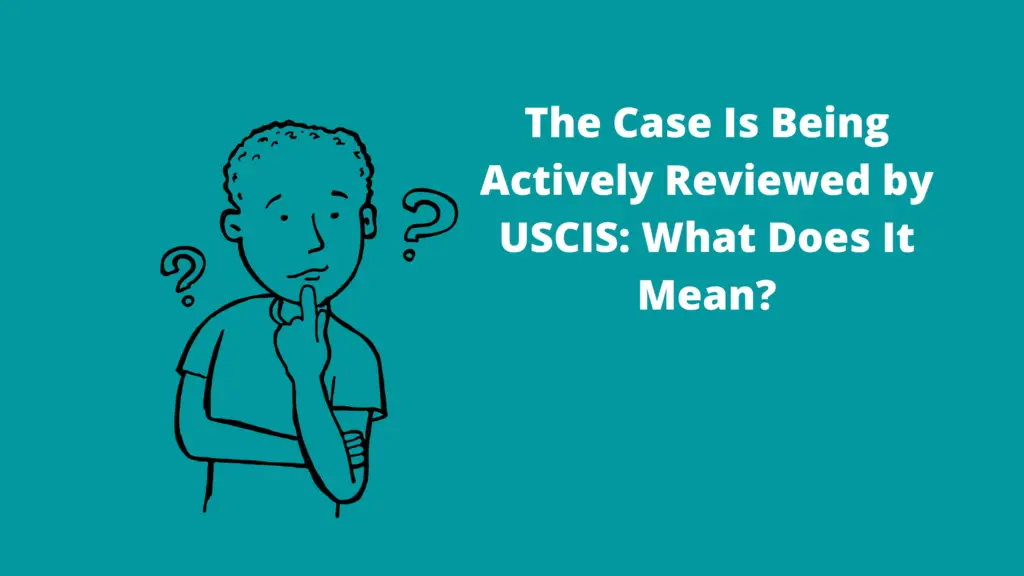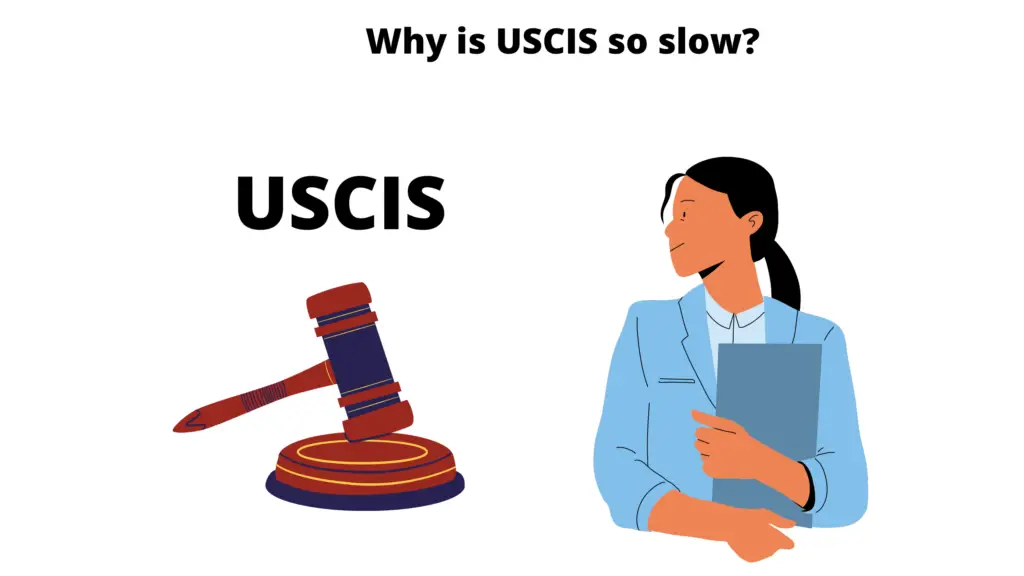It simply means USCIS is working on your file. This status is usually accompanied by the statement that “no action is required” and that the filling is being processed in the order it was received.
This status means that no additional documentation is required at the moment. The USCIS will update the case status when it’s moved into the queue for further processing.

How long does it take for USCIS to complete an active review case?
Ideally, it takes 120 days to process if no document is missing. But it can take months (sometimes years, depending on the case to get into the hands of someone who will handle it.
The next question is, how long may a USCIS case take from an officer assigned to a final decision?
It depends on the workload your local field office has and whether or not you have included required documents and responded amicably to document requests. Overall. USCIS decides 26,000 cases per day.
So, it takes several months to process certain cases because of backlog. First, USCIS prioritizes forms that may yield immediate benefits. It has little value in quickly processing an I-130 if the next step is years away.
And second, The USCIS currently receives almost no governmental funding, it is funded through processing fees, and unless they significantly increase it, they can’t process it faster.
Why is USCIS so slow?

The USCIS immigration infrastructure is sized for the number of people they want coming into the country, as opposed to the number of people who, for their purpose, want to be there.
While USCIS willing they bring enough people to fill all those “jobs Americans won’t do.
Further, here is some reason that slows down USCIS:
- Volume: The USCIS receives a very high quantity of forms: roughly 30,000 per business day.
- Complexity: Some forms are very simple. Others can be very complex to adjudicate. Some of their staff are specialized in a very small subset of these forms because it requires deep knowledge of the labor market, the domain, etc.
- Some forms require a background check to be completed before they can be processed, adding to the process length.
- While in theory, the USCIS can revoke any petition they approve, in practice it’s complicated. They have little room for errors. Correcting an error can be a long and costly process. So they are very careful when they adjudicate a petition.
Premium processing for all its immigration forms
The USCIS does not offer premium processing for all its immigration forms. Whenever they offer premium processing, those cases push the petitions and applications of those who cannot afford the premium fee further back in the line.
They have the option of premium for all case types and they are now expanding beyond the business case. Whenever the form is added to the premium, there is a mandate that there are no discernable negative effects in regular field cases.
The real issue is whether USCIS can adjudicate applications timely, by analyzing evidence, and keep officers happy to retain them. So, USCIS does not accept premiums except in the most difficult circumstances.
Does USCIS issue a visa?
No, USCIS does not issue visas. USCIS comes under the Department of Home Land Security and handles the internal or US-related aspects of the immigration and naturalization system.
Visas are issued by embassies and consulates outside the US which come under the Department of State.
So USCIS processes the applications related to immigration, work authorization, asylum, etc., and authorizes states within the US. US visas are only permitted to travel to the US for various purposes and nothing else.
So suppose you want to work in the US on a HIB. USCIS will do all the processing of HIB. If you are already on a US non-immigrant visa, you can apply for a change of status to USCIS.
If you are outside the US, you need to apply to an embassy \consulate to get a visa to travel to the US based on your HIB authorization.
So visa deals with your ability to travel to the US and is issued by embassies and consulates. USICS deals with matters related to your status within the US.
Further, a simple case like an I-90 application for a replacement green card can go for pending on the same day the application is completed with all the required evidence.
Online case status-checking panders to today’s instant gratification society. The USCIS phone line would be jammed with status inquiries where it is not for online services.
It’s important to note that the USCIS reopened a case that was previously approved. Although, it’s very rare for the USCIS to reopen the approved case.
It is done in a situation where an unusually high amount of regulation might affect your case. For example, you have an approved H1B petition.
Later, your employer is being audited and declared a willful violator of the H1B program by repetitively submitting inaccurate and misleading information/evidence to the agency. The agency will review all the H1B petitions of that employer.
The case was Updated to Show Fingerprints Was Taken i-485. What does it mean?
The status message “Case Updated: Fingerprints Taken” indicates that USCIS has obtained your fingerprints.
This is a standard procedure for processing various immigration applications, such as Form I-485, Application to Register Permanent Residence, or Adjust Status.
Fingerprinting is conducted to conduct a background check on you, assisting USCIS in determining your eligibility for a green card and identifying any potential security risks.
After your fingerprints are taken, USCIS will review them and proceed with processing your application. The subsequent steps in the process may vary depending on your specific case circumstances.
In some instances, USCIS may schedule an interview with you to gather additional information or verify your identity. Alternatively, they may approve your application without requiring an interview.
If you have any inquiries regarding the status of your application, feel free to reach out to USCIS customer service.
Here are several possible outcomes following the fingerprinting process:
- Interview: USCIS may schedule an interview with you to obtain more information or confirm your identity.
- Approval: USCIS may approve your application and issue you a green card.
- Request for Evidence (RFE): USCIS may request additional evidence if they need more information to evaluate your case.
- Denied: USCIS may deny your application if you are deemed ineligible for a green card.
The processing time for your application after fingerprinting varies based on your specific circumstances. Generally, it can take several months or even years for USCIS to reach a decision.
While waiting for a decision on your I-485 application, it is essential to remain patient and regularly check the status online. You can also contact USCIS customer service to inquire about the progress of your application.
Conclusion:
The case is actively reviewed by USCIS means, the USCIS is working on your file. There is no additional documentation is required at the moment.
Here is the question in my mind; How long does it take USCIS to review a case? Usually, it takes 3 to 6 months but can take more time.
Due to the volume of cases, they get and available staff, there is always a delay in processing a petition. Further, some of the applications and related documentation might be complex and require additional processing time.
In recent times, the process has been slower because of two reasons. These include backlog due to COVID-19 as there was a closure and applications filed at that time remain pending. Secondly, the Trump administration did not process petitions on a timely basis.
It was the reason that they wanted to decrease the proportion of migrants in the United States. Hence, the USCIS has to take care of the backlog and ensure better services are provided to the people in need of their services.
It should also be noted that USCIS does not issue visas, but it deals with the processing of immigration applications.
If your application status does not change in 120 days, you might call the office and request them to expedite the application processing.
Frequently asked questions
Why is USCIS so Slow in 2022?
USCIS is specifically slow in 2022 because of the following reasons.
- There is a higher backlog of applications due to the COVID-19 impact. The productivity and efficiency of the mailing system, delivery, inspection, and background checks have been severely affected. Hence, the current backlog is slow and taking time due to backlog.
- Trump’s administration aimed at reducing legal emigrants in the United States. They didn’t process the visa petitions on a timely basis as a way to reduce the number of immigrants in the country.
What is the current approval time for the I-485?
The process for the I-485 currently takes 8-14 months of processing. It’s a general range. However, it can be different in different cases depending on the complexity of the specific case.
Is USCIS taking steps to reduce the backlog time?
Yes, they have recently announced that they intend to hire more people and make efficient use of the technology to deal with the application processing. They are hopeful of reducing the time by 2023.
What are the steps for applying to USCIS?
The following steps need to be taken if you intend to apply to USCIS.
- Complete your application process. This can be done by filling out the form and submitting the requirements.
- Complete biometric-related formalities.
- Prepare for the interview/
- Take the oath.
- You are ready to go.

